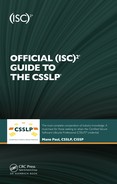Appendix D
HTTP/1.1 Status Codes and Reason Phrases (IETF RFC 2616)
The status code element is a three-digit integer result code of the attempt to understand and satisfy the request. The reason phrase exists for the sole purpose of providing a textual description associated with the numeric status code, done out of deference to earlier Internet application protocols that were more frequently used with interactive text clients. A client should ignore the content of the reason phrase. The reason phrases listed are only recommendations and may be replaced by local equivalents without affecting the protocol.
The first digit of the status code defines the class of response. The last two digits do not have any categorization role. There are five values for the first digit:
- 1xx: Informational: Request received, continuing process
- 2xx: Success: The action was successfully received, understood, and accepted
- 3xx: Redirection: Further action must be taken in order to complete the request
- 4xx: Client Error: The request contains bad syntax or cannot be fulfilled
- 5xx: Server Error: The server failed to fulfill an apparently valid request
Response Class
Status Code
Reason Phrase
1xx: Informational: Request received, continuing process
100
Continue
101
Switching protocols
2xx: Success:
The action was successfully received, understood, and accepted
200
OK
201
Created
202
Accepted
203
Nonauthoritative
204
No Content
205
Reset Content
206
Partial Content
3xx: Redirection:
Further action must be taken in order to complete the request
300
Multiple Choices
301
Moved Permanently
302
Found
303
See Other
304
Not Modified
305
Use Proxy
307
Temporary Redirect
4xx: Client Error:
The request contains bad syntax or cannot be fulfilled
400
Bad Request
401
Unauthorized
402
Payment Required
403
Forbidden
404
Not Found
405
Method Not Allowed
406
Not Acceptable
407
Proxy Authentication Required
408
Request Time-out
409
Conflict
410
Gone
4xx: Client Error:
The request contains bad syntax or cannot be fulfilled
411
Length Required
412
Precondition Failed
413
Request Entity Too Large
414
URI Too Long
415
Unsupported Media Type
416
Request range not satisfiable
417
Expectation Failed
5xx: Server Error:
The server failed to fulfill an apparently valid request
500
Internal Server Error
501
Not Implemented
502
Bad Gateway
503
Service Unavailable
504
Gateway Time-out
505
HTTP Version not supported
HTTP status codes are extensible. HTTP applications are not required to understand the meaning of all registered status codes, although such understanding is obviously desirable. However, applications must understand the class of any status code, as indicated by the first digit, and treat any unrecognized response as being equivalent to the x00 status code of that class, with the exception that an unrecognized response must not be cached. For example, if an unrecognized status code of 431 is received by the client, it can safely assume that there was something wrong with its request and treat the response as if it had received a 400 status code.
For a complete understanding of the status codes and their response phases, it is recommended that you consult the IETF RFC 2616 publication.
